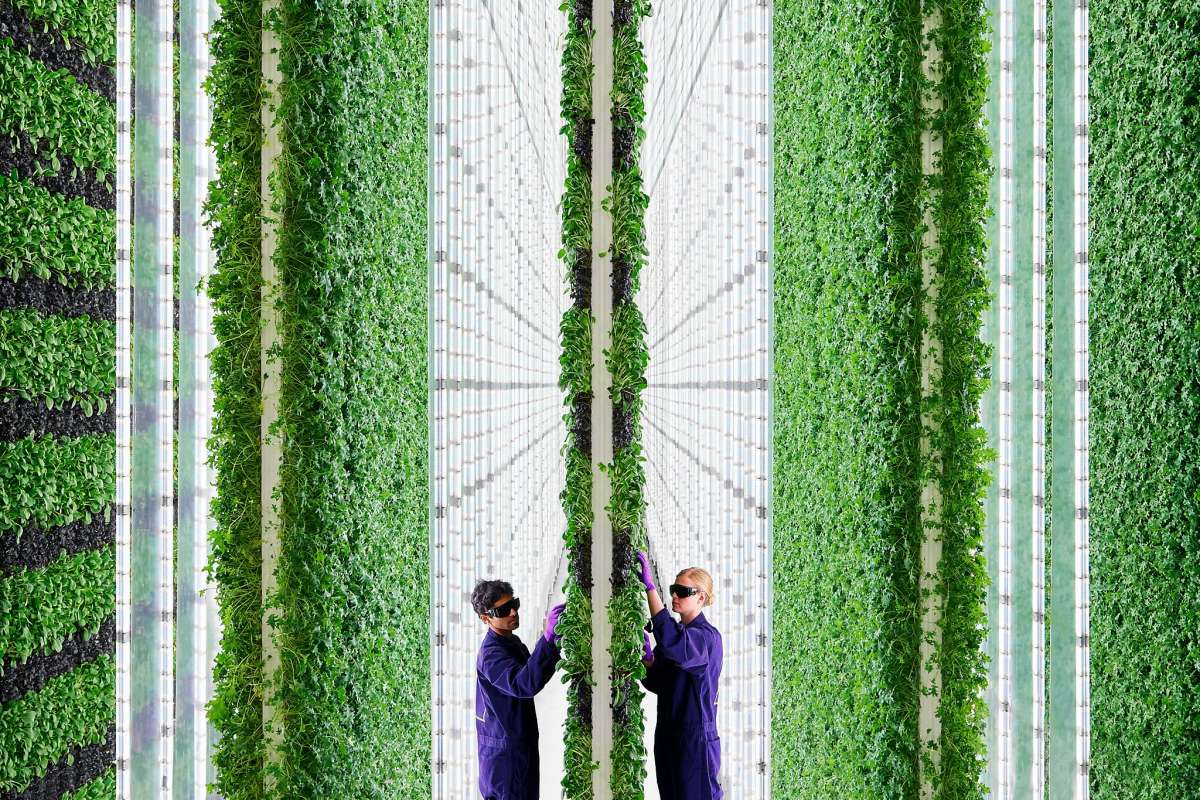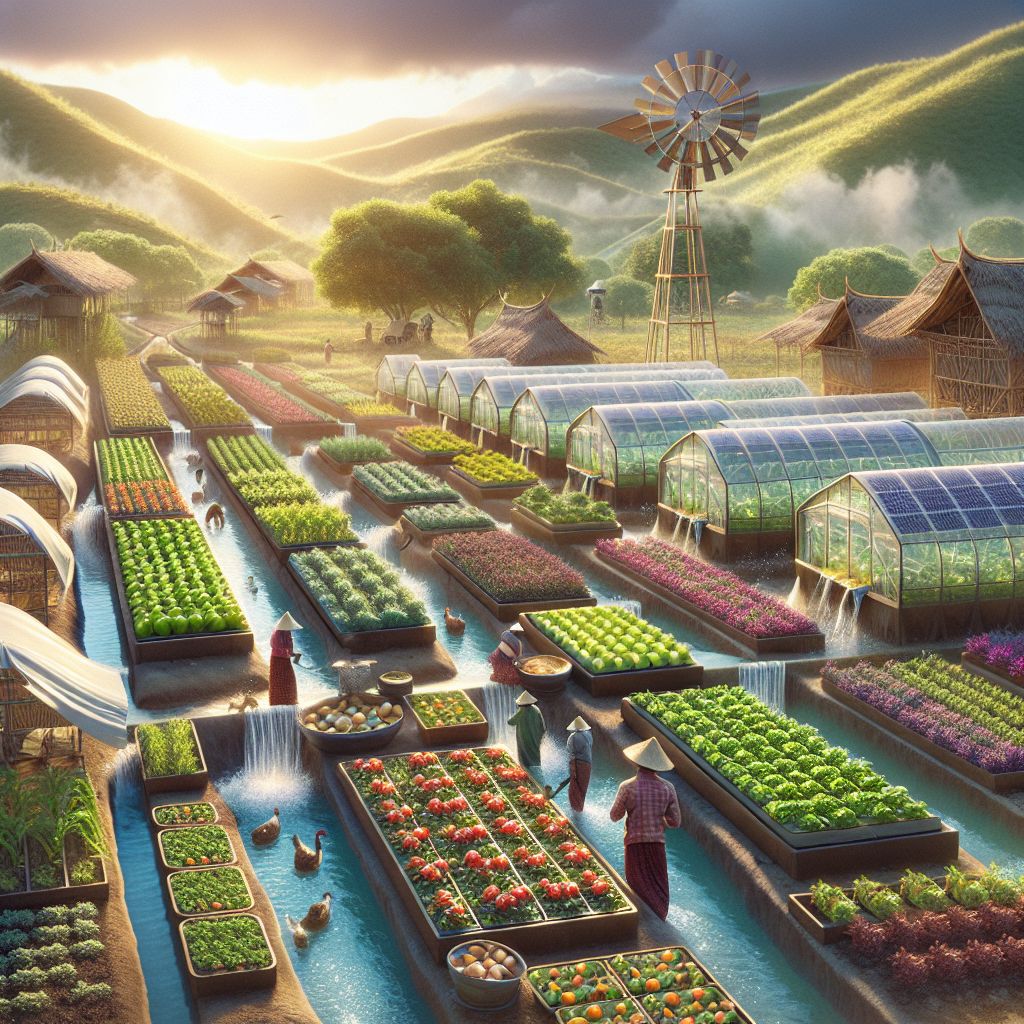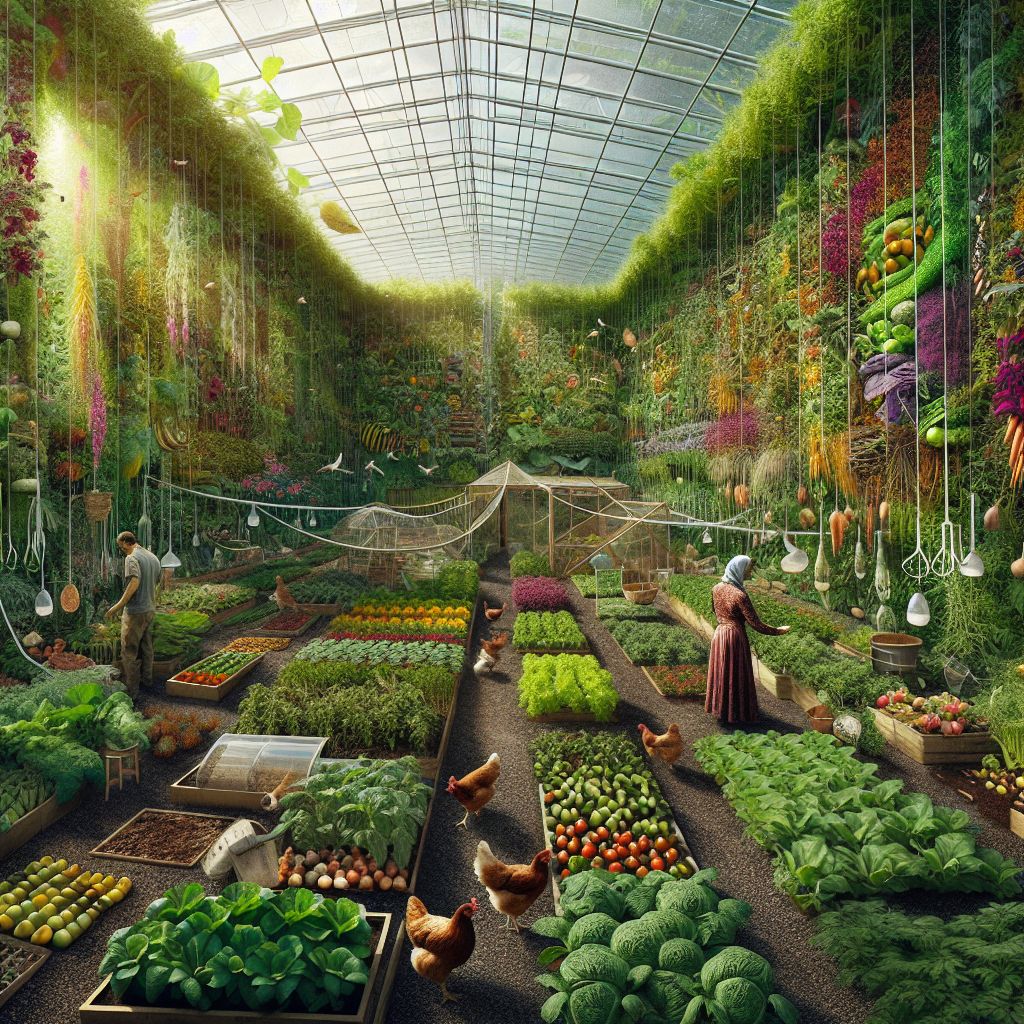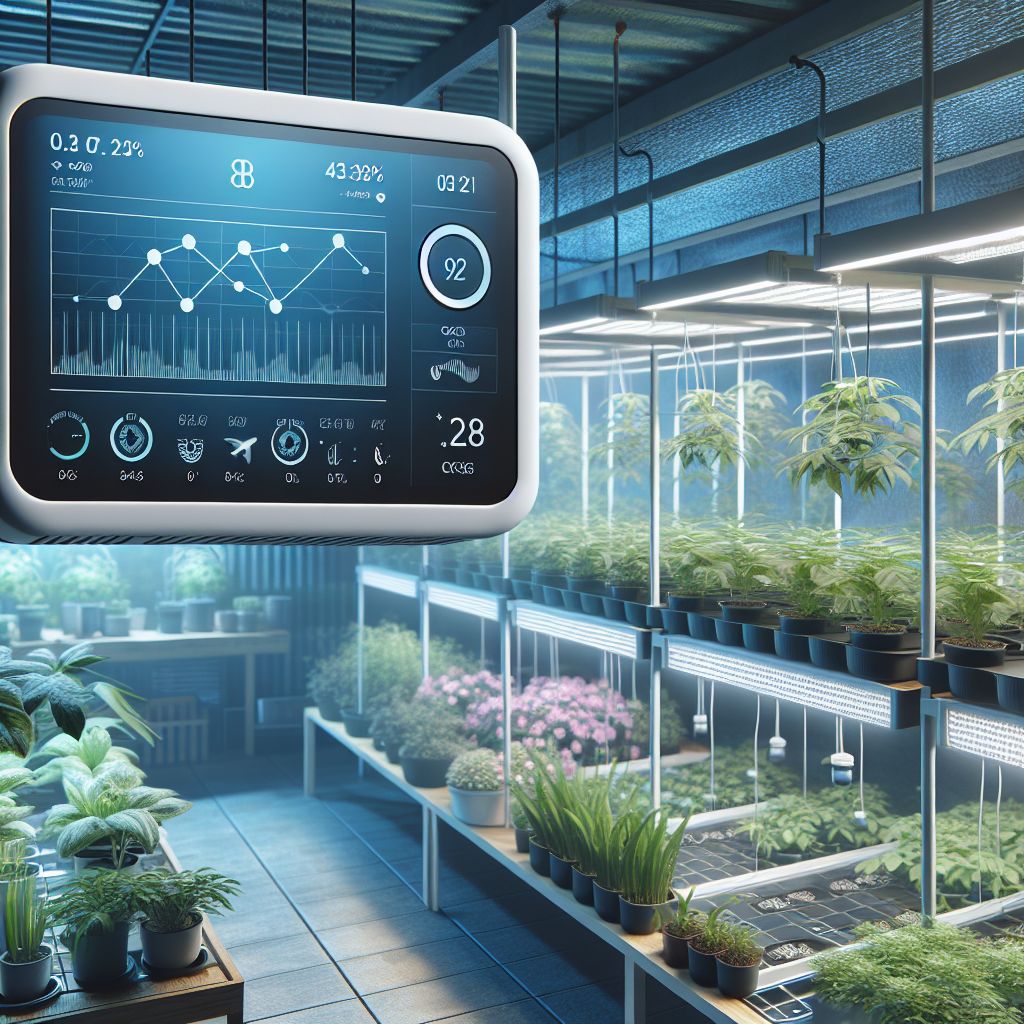Key Takeaways
-
Vertical farming allows for year-round crop production in a controlled environment, maximizing space and resources.
-
Efficient harvest cycle scheduling is crucial for optimizing yield and ensuring a consistent supply of produce.
-
Automation and robotics are transforming vertical farming by performing repetitive tasks, reducing labor costs, and improving crop monitoring.
-
Strategic lighting, spacing, and nutrient delivery are key techniques for enhancing growth in vertical farming systems.
-
Planning and overcoming common challenges are essential for scaling up vertical farming operations successfully.
Reaping the High-Tech Harvest: Vertical Farming Essentials
What is Vertical Farming?
Imagine a farm that stretches not across acres of land, but upwards, in layers, like a green skyscraper. That’s vertical farming. It’s a way of growing crops in stacked layers, indoors, under controlled conditions. Vertical farming isn’t just a cool concept, it’s a response to the growing need for sustainable agriculture practices as our global population rises and arable land decreases.
Because we’re working with a smaller footprint, vertical farming is all about precision. Every drop of water, every beam of light, and every nutrient is carefully controlled to get the most out of the plants. This means we can grow crops closer together, use less water, and avoid the unpredictability of weather that traditional farmers have to deal with.
The Importance of Harvest Cycle Scheduling
When you’re farming up instead of out, your crops don’t have the luxury of time and space. That’s why harvest cycle scheduling is a game-changer. It’s the process of planning when to plant and when to harvest to keep the greens coming consistently. Think of it as choreographing a dance where the music never stops – it’s all about timing and rhythm.
Efficient harvest cycle scheduling means you can harvest fresh produce all year round, and because of the controlled environment, every batch is as good as the last. No more seasons dictating what you can grow – lettuces in December, strawberries in February, the sky’s the limit.
Maximizing Your Yield with Smart Scheduling
The Basics of a Harvest Schedule
So, how do you set up a harvest schedule that works? Start simple:
-
Know your crop: Each plant has its own rhythm and growth rate. Some are sprinters, others are marathon runners.
-
Monitor growth: Keep an eye on how your crops are doing. A plant that’s ready for harvest shouldn’t wait, and one that’s not shouldn’t be rushed.
-
Stagger planting: Don’t plant all your seeds at once. Spread out planting times so that you’re not overwhelmed with everything maturing at the same time.
Remember, the goal is to have a continuous flow of produce. If you harvest a batch of lettuce today, there should be another batch ready to go in a few weeks. This keeps your operation running smoothly and your customers happy.
Robotics: The Helping Hands in Vertical Farming
Let’s talk about the workforce in vertical farming. No, not people – robots. These metallic farmhands are changing the game. They tirelessly sow seeds, monitor plant health, and harvest crops with precision. It’s like having an army of green-thumbed robots at your service.
But why use robots? For starters, they don’t get tired or call in sick. They can work around the clock, ensuring plants are tended to exactly when needed. Plus, they’re incredibly accurate, which means less waste and more produce. In vertical farming, where every inch counts, precision is everything.
Software Solutions for Smarter Cycles
Now, to make sure these robots are doing their job right, you need smart software. Think of it as the brain that controls the brawn. This software schedules everything in the farm – from when the LED lights switch on to when it’s time to water the
plants.
-
Tracks plant growth stages
-
Adjusts water and nutrient levels
-
Controls climate conditions like temperature and humidity
With the right software, your farm becomes a finely tuned machine, churning out crops with the efficiency of a factory line.Imagine a dashboard where you can see everything that’s happening in your farm in real-time. You’ll know which plants need attention, which are ready to harvest, and which will be ready next week. That’s the power of software in vertical farming.
And the best part? You don’t need to be a tech whiz to use it. Today’s software is designed to be user-friendly, so you can focus on growing your crops, not figuring out how to run the program.
Growth in Layers: Efficient Techniques Explored
“Vertical Farming Automation System …” from www.mdpi.com
Lighting Strategies for Optimal Growth
Plants need light to grow, but in a vertical farm, the sun’s rays can’t reach every leaf. That’s where artificial lighting comes in. LED lights provide the full spectrum of sunlight that plants crave, and they do it more efficiently than the sun could indoors.
But it’s not just about turning on some lights and calling it a day. You have to strategize:
-
Intensity: How bright are the lights? Different plants need different amounts of light.
-
Duration: How long are the lights on? Just like you and me, plants need their rest too.
-
Color spectrum: Yes, plants have color preferences, and getting the mix right can speed up growth.
By tailoring the lighting to the plants’ needs, you can push them to grow faster and healthier.
Spacing and Plant Arrangement
Next up is spacing. In vertical farming, every inch is precious real estate. You want to pack in as many plants as possible, but not so close that they start competing for light and air.
Here’s where it gets clever: by understanding how plants grow, you can arrange them so that the taller ones don’t overshadow the shorter ones. It’s like organizing a group photo so everyone can be seen. And just like in the photo, everyone looks their best when they have the space to shine.
Nutrient Delivery Systems
Plants need more than just light and space, they need food – in the form of nutrients. In vertical farming, we deliver these through water in a system called hydroponics or aeroponics. It’s like a smoothie of all the good stuff plants love, delivered straight to their roots.
Example: Think of a nutrient delivery system like a drip coffee maker. Just as the coffee maker ensures water flows evenly over the coffee grounds, the nutrient system ensures plants get an even, consistent flow of nutrients.
This system means plants get exactly what they need, when they need it, with no waste. It’s a closed-loop system, which means the water gets recycled, saving resources and being kind to the planet.
How to Succeed in Vertical Farming
To succeed in vertical farming, it’s not just about having the latest tech or the tallest towers of plants. It’s about understanding the whole system and how each part works together.
Success comes from careful planning, knowing your crops, and being willing to adapt. It’s about watching, learning, and improving with each cycle. And most importantly, it’s about being efficient in every aspect of the process.
The Impact of Automation for Success
Automation is a big part of that efficiency. With robots and software taking care of the routine tasks, you can focus on the bigger picture – like how to improve your yields or expand your range of crops.
It’s also about consistency. Automation means that every plant is treated the same way, every time, which leads to a consistent product. And in the world of farming, consistency is king.
Software-Driven Yield Improvement
Finally, let’s talk about yield. In the end, it’s all about how much produce you can get from your farm. And that’s where software-driven data analysis comes in. By tracking everything – from temperature to growth rates – the software can help you spot patterns and make changes that boost your yield.
Maybe you’ll find that a slight tweak in the lighting schedule speeds up growth, or that a certain nutrient mix leads to tastier tomatoes. Whatever it is, the data will guide you.
And that’s the beauty of vertical farming – it’s a blend of nature and technology, where efficiency is king and the possibilities are as high as your tallest shelf of greens.

“Most Efficient Farm …” from www.agritecture.com
Scaling New Heights with Vertical Farming
Scaling up a vertical farm is like climbing a mountain – it takes preparation, the right tools, and a clear path forward. You’ve got the basics down, your crops are thriving, and now it’s time to reach for the sky. But with greater heights come greater challenges, and that’s where strategic planning makes all the difference.
Expansion means more than just adding more layers to your farm – it’s about scaling your operations in a sustainable way. It’s about ensuring that your increased production doesn’t outpace your ability to maintain quality, manage resources, and satisfy market demand.
Planning for Expansion
When you’re ready to grow your vertical farm, start with a solid plan. Consider the following:
-
Market demand: Are you expanding to meet a specific demand? Know your market and grow crops that will sell.
-
Resource management: More plants mean more water, nutrients, and light. Can your current systems handle the increase?
-
Labor: Automation can handle a lot, but you might still need more hands on deck. Plan for hiring and training new staff.
Don’t forget about the financial side of things. Expansion requires investment, so you’ll need a clear picture of the costs and how you’ll cover them – whether it’s through profits, loans, or investors.
Overcoming Common Vertical Farming Challenges
Even the most well-oiled vertical farm can run into issues. Here are some common challenges and how to tackle them:
-
Plant diseases: Keep a close eye on your crops. At the first sign of trouble, isolate and treat the affected plants to prevent spread.
-
System failures: Have backup plans for your lighting, climate control, and nutrient delivery systems. A little redundancy can save a lot of headaches.
-
Supply chain issues: Diversify your suppliers for seeds, equipment, and other essentials. Don’t put all your eggs in one basket.
Remember, every challenge is an opportunity to learn and improve. Keep detailed records of what works and what doesn’t, and use that knowledge to make your farm more resilient.

Frequently Asked Questions (FAQ)
How can I determine the optimal harvest cycle for my vertical farm?
To find the optimal harvest cycle, you need to understand your plants’ growth patterns and your market’s needs. Start with the growth cycle of your fastest-growing crop as a baseline, and adjust based on observations and data. Regularly monitor your crops, keep records of growth rates, and be prepared to adapt your schedule as you learn more about your plants’ specific needs.
What technologies are necessary for creating an efficient vertical farm?
An efficient vertical farm relies on a few key technologies:
-
Climate control systems: For managing temperature and humidity.
-
LED lighting: To provide a full spectrum of light for plant growth.
-
Hydroponic or aeroponic systems: For nutrient delivery and water conservation.
-
Automation and robotics: For tasks like planting, monitoring, and harvesting.
-
Data analysis software: To track plant growth and optimize conditions.
Investing in these technologies will set the foundation for a successful and efficient vertical farm.
Are there cost-effective solutions for small-scale vertical farmers?
Yes, small-scale vertical farmers can still benefit from technology without breaking the bank. Start with DIY hydroponic systems, use energy-efficient LED lights, and consider open-source software for monitoring your crops. As you grow, reinvest profits into more advanced technologies.
How does vertical farming conserve water and space?
Vertical farming conserves water through closed-loop hydroponic or aeroponic systems, which recycle water directly to the roots, reducing waste. By growing upwards, vertical farms also use less land, making it possible to produce more food in smaller urban spaces or areas with poor soil quality.
What are the most common crops suitable for vertical farming?
Common crops for vertical farming include:
-
Leafy greens like lettuce, kale, and spinach
-
Herbs like basil, cilantro, and mint
-
Small vegetables like cherry tomatoes, peppers, and strawberries
These crops thrive in controlled environments and have high market demand, making them ideal for vertical farming operations.
Vertical farming isn’t just a method of growing food – it’s a leap towards a sustainable future. It’s about using technology to grow smarter, not just bigger. It’s about making every drop of water, every watt of light, and every square inch count. So go ahead, reach for those heights, and let’s revolutionize the way we feed our world, one layer at a time.





